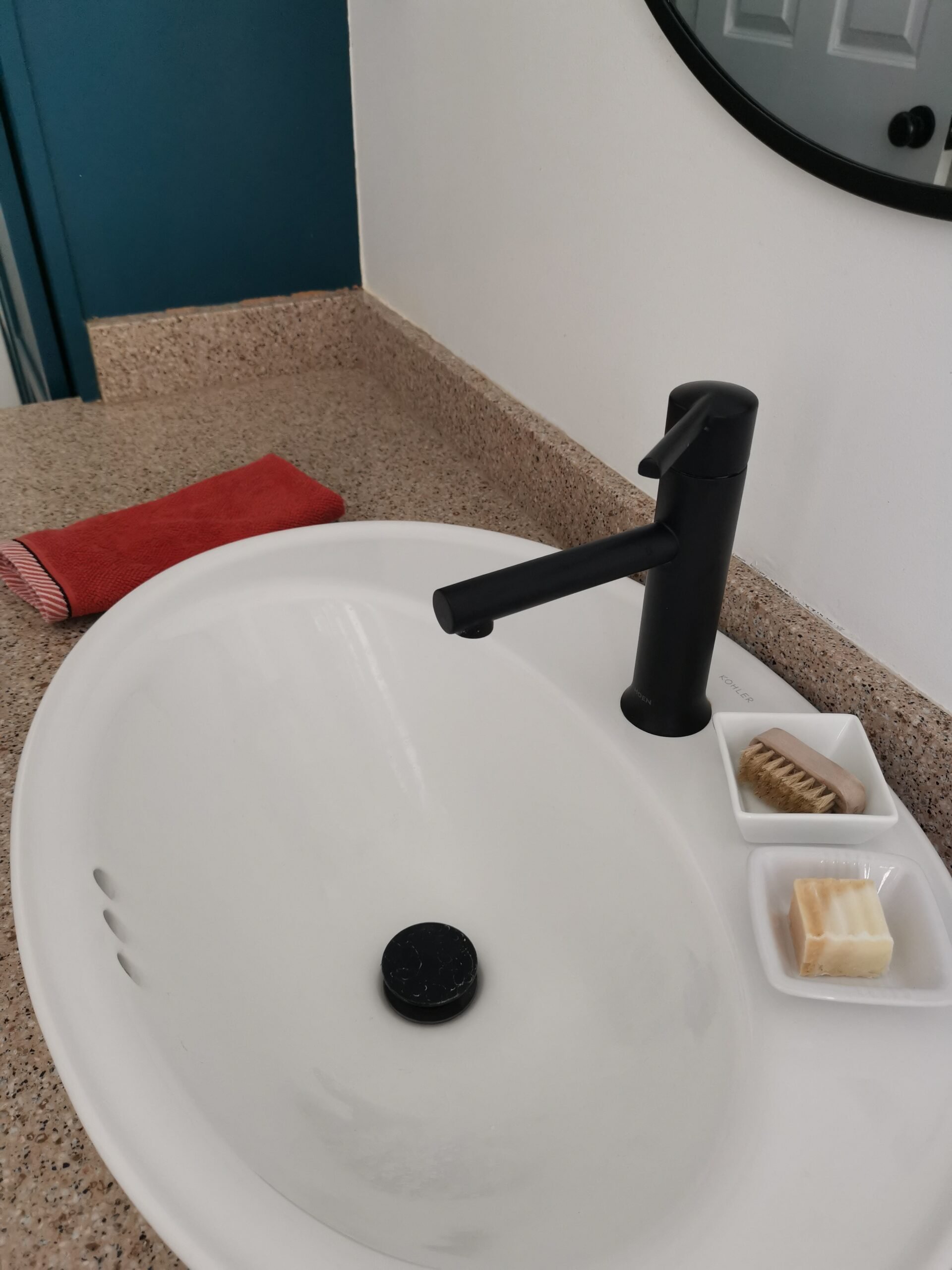Montessori Self-care at Home
Simple adaptations can offer your toddler a lot of independence in self-care. An easy way to start is helping your toddler reach the bathroom sink and see into the mirror. Consider storing an inexpensive, lightweight step stool in the vanity cupboard. Your toddler will feel proud that she can take out and put away the step stool herself. It is important to remove all toxic or dangerous items from the cabinet and the top of the vanity if your child will have free access to it.
Handwashing
This essential task can be taught using either liquid soap or a small bar soap that sits on its own dedicated soap dish. Demonstrate rubbing your soapy hands together for 20 seconds. Consider offering your child a child-sized nail brush on a separate soap dish. Nail brushing is an important hygienic skill, and it also offers valuable fine motor exercise. Show your child what towel he can use to dry his hands after washing.
Face washing
To support independent face washing, place a basket of clean baby washcloths on the vanity top. Demonstrate selecting one washcloth, wetting it, squeezing the excess water out, and washing your face with it. Show your child where to put a wet washcloth when she is finished with it. Show your child the towel she can use to dry her face.
Nose wiping/blowing
Provide a box of tissues and a waste bin within reach at all times. Tissues that pull from the top one at a time are the easiest for toddlers to manage. Most toddlers do not like the feeling of a runny nose and can be easily encouraged to get a tissue, wipe their nose, throw away the tissue, and wash their hands. In the beginning, watch carefully to ensure your toddler puts the used tissue in the waste bin, not back in the tissue box.
Dental Care
To promote excellent dental hygiene, create a small toothbrushing kit for your toddler. At first, the kit might contain only a soft, child-sized toothbrush and a two-minute timer. Your child will try her best to do what you do, so demonstrate brushing your own teeth and tongue gently for two minutes. Dentists advise not teaching children to rinse and spit after brushing because, when the child is old enough to use fluoride toothpaste, it is important to allow the fluoride to remain on the teeth.
At first, you will want to keep the toothpaste out of your toddler’s reach. With demonstrations from you and opportunities for supervised practice, your child will soon be able to apply a pea-sized amount of toothpaste to her own toothbrush. Non-fluoride toothpaste is safe for children who might accidentally swallow toothpaste. Once you are confident your child can spit out toothpaste reliably, it is safe to switch to fluoride. When you trust that your child will not eat the toothpaste or squeeze the tube out, add a travel-sized tube of toothpaste to the kit.
Flossing is also important. At first, your child will need you to floss for him. Try using soft interdental brushes. If you are able to, stand behind your child and reach around his face to floss, allowing him to watch in the mirror. When you have observed that your child can safely floss independently, add a small container of soft interdental brushes to the kit.
Hair care
Offer your child a small basket containing a hair care tool suited to the texture of his hair. Consider a pick, a wide-toothed comb, a fine-toothed comb, or a soft brush. Invite your child to watch in the mirror while you care for his hair. When you are finished, offer him a turn. Store the hair care basket under the sink with the stool or somewhere he can easily reach it when he wants to style his hair.
Nail care
Create a nail care set for your child with small emery boards, infant nail clippers, and a small tube of hand lotion. In the beginning, perform all nail care tasks for your child. When your child asks whether he can have a turn, allow him to try with supervision. When you observe that your child can safely use an item, allow it to be stored within his reach so that he may practice whenever he wishes.
Dermatologists suggest that cutting fingernails and toenails straight across will support stronger nails and reduce ingrown toenails. Fingernails can be rounded at the corners to prevent scratching and snagging. Hangnails should always be removed promptly with a nail clipper. Cuticles protect the nail bed and should be left alone, not pushed back.



